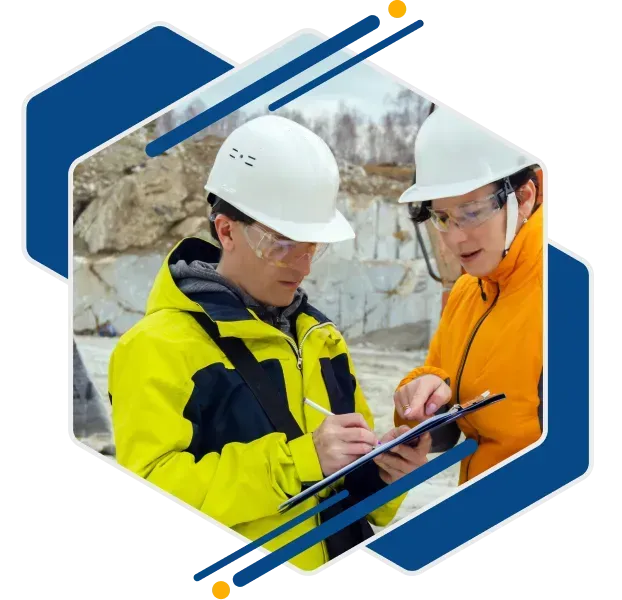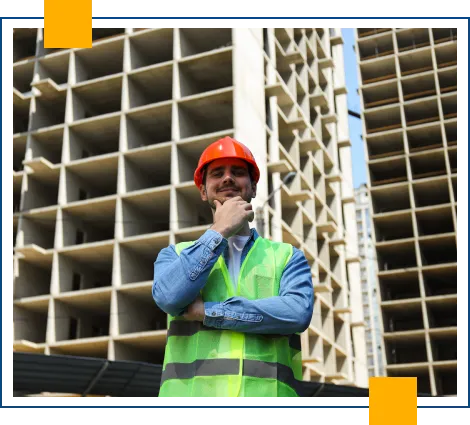Now Offering Spanish Safety Training!

Now Offering Spanish Safety Training!
Construction Safety
Train The Trainer Programs
FSDAVCFEBFEVSDDVFSD
FSDAVCFEBFEVSDDVFSD
FSDAVCFEBFEVSDDVFSD
Construction Safety - Train the Trainer Programs
We Train Your Trainers to Run All Safety Programs

Training-the-Trainer programs are designed to equip construction supervisors with essential safety skills and the knowledge to pass them down. These programs focus on recognizing potential hazards, implementing safety protocols, and managing on-site risks. Trainers gain the knowledge needed to educate workers on critical safety practices, fostering safer job sites.
By tailoring courses to specific construction needs, these programs address risks like fall protection, heavy machinery handling, and confined spaces. This approach not only helps trainers provide relevant safety guidance but also reinforces OSHA compliance, promoting consistent safety behavior among all team members.

Prompting Confident On-Site Safety Leaders
Developing skilled safety trainers is crucial for maintaining compliance and minimizing accidents on construction sites. Train the Trainer programs equip team leaders with the necessary tools to educate others effectively, covering essential topics like hazard identification, emergency response, and equipment safety. This approach ensures workers receive consistent safety training, boosting overall site safety.
To further enhance training, it’s important to include both classroom instruction and hands-on learning. By integrating real-world scenarios into the curriculum, trainers can demonstrate how to handle specific risks like falls or heavy machinery operation. This method not only builds trainer confidence but also ensures safety messages are clear and actionable.
In addition to structured training, leveraging external resources like construction safety on-site professionals can support ongoing development. These experts can offer specialized guidance and insights tailored to job-specific hazards, helping trainers refine their techniques and stay updated on the latest OSHA requirements. This comprehensive approach encourages long-term safety adherence across all projects.
Teaching Skilled Trainers for Safer Construction Sites

Effective safety training programs should focus on both theoretical knowledge and practical application. Trainers must understand OSHA regulations, hazard identification, and safety procedures specific to construction, such as fall protection and scaffold safety. By engaging with safety committee systems, trainers can align their programs with broader site safety strategies, ensuring a consistent approach across all teams. This collaborative effort boosts compliance and encourages proactive safety measures.
Hands-on exercises are essential to the success of Train the Trainer courses. Integrating role-playing scenarios and interactive drills helps trainers demonstrate safety measures effectively to workers. Trainers should also stay updated on specialized safety training methods, ensuring their approaches remain relevant to evolving site risks. This adaptive approach supports long-term safety awareness, reducing incidents and fostering a safety-oriented work culture.

Continual assessments of training effectiveness play a crucial role in maintaining safety standards. By monitoring feedback from participants and tracking incident rates, organizations can identify areas that need improvement. Adjusting training strategies based on these insights ensures that trainers are addressing the most pressing safety concerns. This approach not only keeps the training relevant but also enhances the overall impact on worker safety across construction sites.
Regular trainer evaluations help reinforce skills and safety knowledge. Trainers should stay updated on industry trends and evolving safety regulations to keep training programs aligned with current standards. Engaging trainers in ongoing evaluations also encourages a proactive approach to safety, which helps them confidently address emerging risks. This feedback-focused approach boosts safety compliance, reducing potential incidents and fostering a safer work environment.
Frequently Asked Questions
Frequently Asked Questions
What exactly is the Train the Trainer program offered by Nain and Associates?
The Train the Trainer program is designed to equip your supervisors and safety officers with the knowledge and tools needed to conduct in-house safety training within your construction company. This program focuses on essential safety topics relevant to the construction industry, such as fall protection, scaffolding safety, and hazard communication, ensuring that your trainers are prepared to educate your workforce on best safety practices and compliance with OSHA regulations.
How can the Train the Trainer program benefit my construction company?
By enabling your team to conduct in-house safety training, the Train the Trainer program helps maintain a high standard of safety education and compliance within your organization. It empowers your supervisors and safety officers to effectively pass on critical safety knowledge and practices, fostering a culture of safety that reduces the risk of accidents and aligns with OSHA's safety standards.
What topics are covered in the Train the Trainer program?
The program covers key construction safety topics, including but not limited to fall protection, scaffolding safety, hazard communication, and the latest safety standards and teaching methodologies. It is tailored to address the unique hazards and challenges present in construction sites, ensuring that your internal trainers are well-equipped to handle real-world safety scenarios.
Who should participate in the Train the Trainer program from my company?
Supervisors, safety officers, and any other personnel responsible for overseeing safety protocols and training at your construction sites are ideal candidates for the Train the Trainer program. Participants should have a foundational understanding of construction safety practices and be in a position to influence safety culture and education within your company.
How do we get started with the Train the Trainer program, and what is the process?
To begin, contact Nain and Associates for an initial consultation to discuss your specific needs and goals for the Train the Trainer program. Our team will then work with you to customize the program content to suit your company's unique environment and challenges. The process involves hands-on training sessions, practical exercises, and comprehensive support to ensure your trainers are fully prepared to deliver effective safety training to your workforce.
Strengthening Job Site Safety Through Competent Trainers
A strong safety culture starts with well-trained leaders who can effectively communicate to their teams. When trainers emphasize consistent safety practices, they create an environment where safety is prioritized. Clear communication of safety procedures reduces confusion and fosters compliance among workers, minimizing risks and incidents.
Training programs should also address specific challenges related to construction safety, such as equipment handling or fall protection. By applying specialized safety systems to training content, trainers equip employees with the tools needed to handle unique hazards. This targeted approach makes safety training more relevant and effective.
Continued support for trainers is key to maintaining a proactive safety culture. Providing resources and regular updates helps trainers stay informed about the latest safety regulations and trends. This support ensures that safety measures remain current and effective in reducing potential risks.


Regular evaluations of training outcomes are essential for achieving long-term success. Trainers should actively gather feedback from participants, analyze compliance data, and review safety records to identify areas for improvement. Adjusting training methods based on these insights ensures that the programs remain effective and up-to-date. This adaptive approach not only keeps safety training relevant but also reinforces a proactive culture that emphasizes continuous learning, compliance, and a safer work environment across all construction sites.
Maintaining a Safety-First Atmosphere on the Job Site
Establishing a safety-first culture in construction begins with effective trainer development. Trainers who understand safety protocols deeply and can communicate them clearly are vital to creating a safer environment. By focusing on their skill enhancement and providing them with updated tools, organizations can ensure that safety training is both engaging and effective. This foundation contributes to stronger compliance and a more confident workforce.
To maintain this safety culture, consistent engagement with safety experts is beneficial. Consulting with construction safety professionals ensures that trainers receive ongoing support and up-to-date information about safety protocols and regulatory changes. These experts offer valuable insights and tailored strategies, helping to refine training methods that meet specific job site needs. Regular collaboration keeps safety initiatives proactive and aligned with industry standards.
For lasting impact, it’s essential to measure the effectiveness of the training programs continuously. This includes analyzing incident rates, gathering employee feedback, and reviewing compliance audits to identify areas needing improvement. Adjusting training materials based on these insights keeps training relevant and impactful. When employees see that their input shapes the training approach, they become more engaged, reinforcing a collaborative culture of safety. This ongoing commitment to safety benefits both employees and the company, creating a safer construction environment overall.
Have Questions About Our Services?
Contact us to learn more today!
Have Questions About Our Services?
Contact us to learn more today!
Design By: Customers.Plus
© 2026 | Nain & Associates LLC




